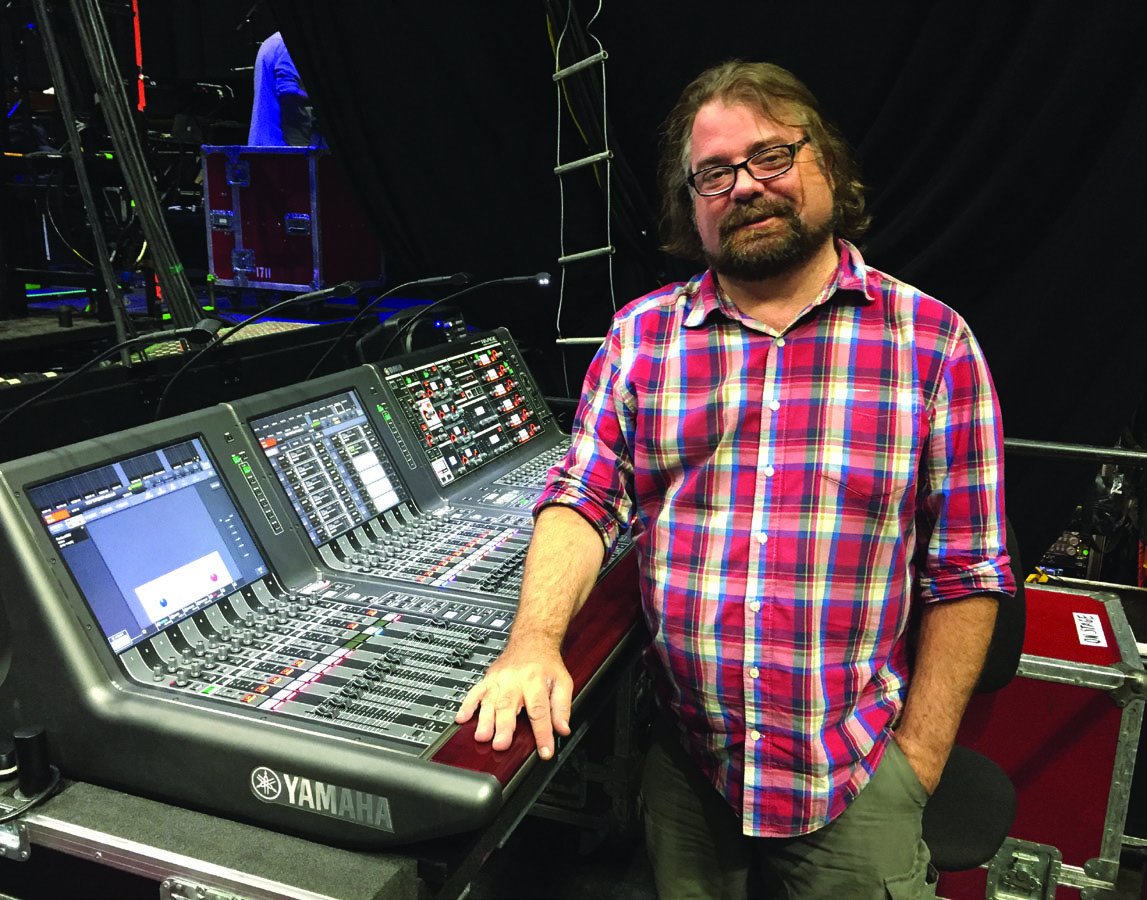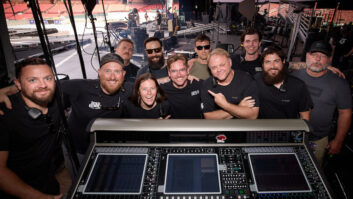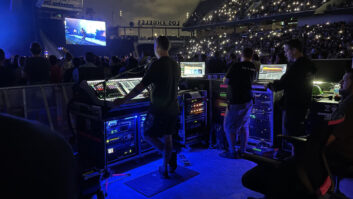
Following a co-headlining run with Hall & Oates this past summer, Tears for Fears stopped in at Royal Albert Hall (for the first time since 1985) in London for a one-off, or perhaps a teaser for its upcoming April 2018 tour through the UK (their first tour there in 18 years). Firehouse provided production for the U.S. leg; Subfrantic supported the Royal Albert Hall date. Pablo Wheeler is mixing FOH on a DiGiCo SD 10, while monitor engineer George Squiers mixed all shows from a new Yamaha PM10 console, making use of 48 inputs.
“We are old engineers with a very simple/not complicated approach to mixing a great rock band. We try to let them do all the work,” Squiers laughs. “We have a standard splitter line system hitting our I/O racks, and I have 8 stereo channels of in-ears, plus a shout speaker and a thumper. Basic reverbs for vocals and drums. Nothing overcomplicated. I figure the less in line the better.”
The miking scheme onstage includes a Radial Firefly tube DI for bass; DPA d:facto wired vocal mics for backups and d:facto capsules adapted for Shure handheld transmitters for lead singers Curt Smith and Roland Orzabal; DPA 4099s for toms and snare; and DW moon mic on the kick drum. There are no guitar mics, simply Kemper stereo units. “This is the first time in my career, in almost 30 years, I haven’t used a mic on a cabinet,” Squiers says. “Charlton and Roland programmed them, and they sound fantastic.”
The wireless system is Shure PSM 1000, with all JH Audio Roxanne in-ears, except for Orzabal, who prefers JH 10s.
“Sound is subjective,” Squiers says of his approach to the artist’s mixes. “Everyone has different needs for survival in the spotlight. I don’t ask the artist how it sounds; I ask them how it feels, because that’s what it’s all about. I pride myself in the finish work and the detail. Being able to manipulate a mix without changing what the artist is striving for is important.
“I use panning—real estate, I call it. Instruments and vocals not only play a role in the sonic spectrum but they also have a place on the physical plane. I also call it spatial awareness. We are blessed with two ears and an amazing awareness of imagery. Why not utilize it? It’s inspiring. So I am absolutely active song to song.”




